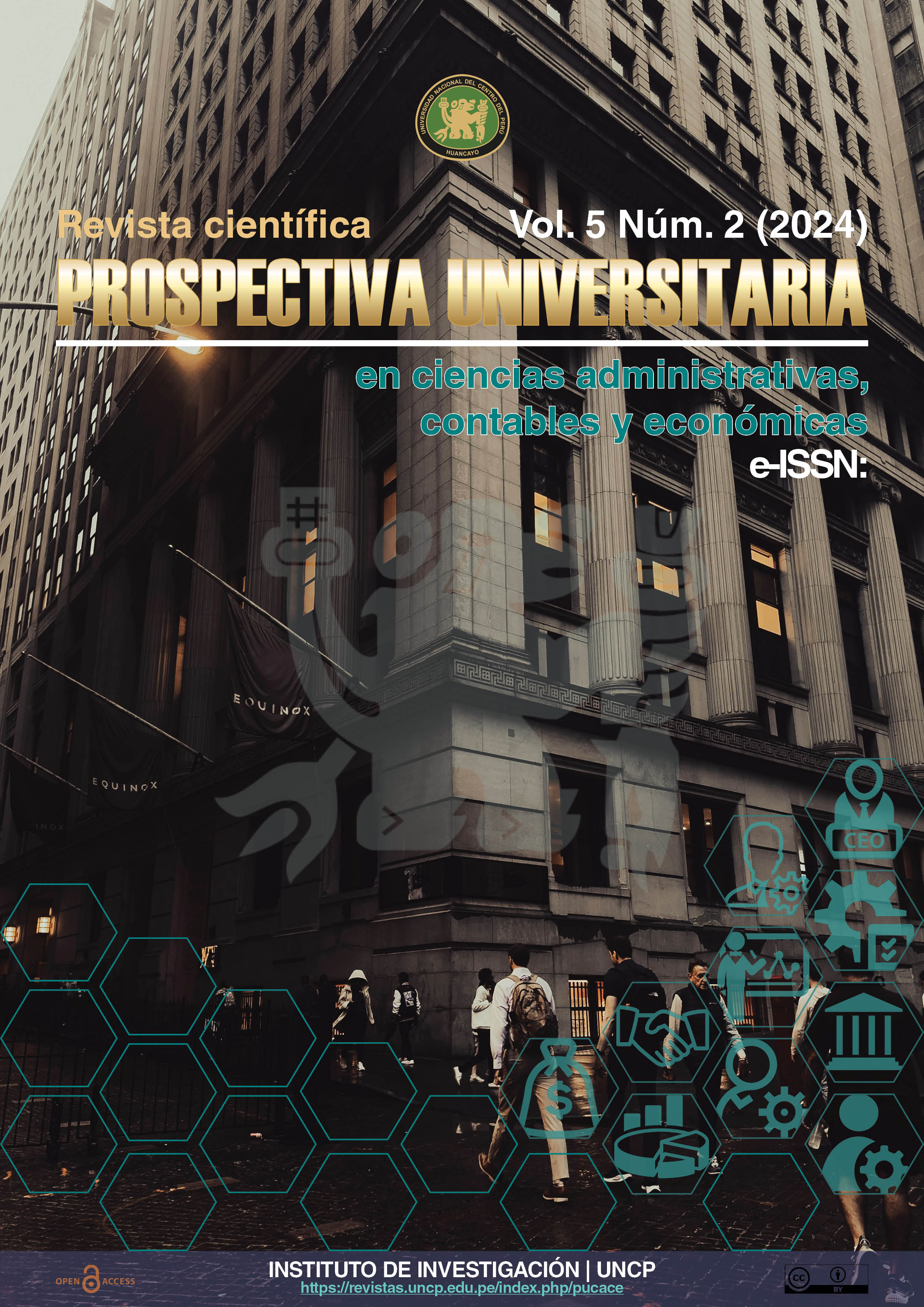Evaluation of annual gold production, using the Leontief production function, Yanacocha mining case 2010 and 2015
Keywords:
surface mining, companies, cost effectiveness, capital, piot, miotAbstract
The object is to evaluate the annual gold production of Yanacocha, through the production function of Leontief with the ratio 0.62 of the gold vein (natural gold in rocks, as mineral of other metals and the cuarzo) to the total minado, with Data from 2009 to 2010 and is based on the latest data for 2015. The method is based on the model's total economic product, formulated in the physical units (PIOT), with the largest gold production in 147% and 4% reported. By the Ministry of Energy and Mines of Yanacocha for the years 2010, and 2015, these results correspond to 73.8Mt and 1.9Mt of gold vein not considered respectively. Yanacocha's economic downturn for 2010, with 860% of its media assets, includes the media composition of its working capital that has an annual usage or over 1,333 million dollars, with a 300% profit.
References
Albino, V., Izzo, C., & Kühtz, S. (2002). Input–output models for the analysis of a local/global supply chain. International Journal of Production Economics, 78(2), 119-131. https://doi.org/10.1016/S0925-5273(01)00216-X
Azañero, Á. (2012). Flotación de minerales polimetálicos sulfurados de Pb, Cu y Zn. https://onemine.org/documents/flotaci-n-de-minerales-polimet-licos-sulfurados-de-pb-cu-y-zn
Gonzales, E. (2016). Una economía incompleta, Perú 1950-2007: Análisis estructural. Instituto de estudios peruanos.
Leontief, W. (1970). Análisis económico input-output.
Marx, K. (2023a). El capital. Crítica de la economía política, III, libro III. Fondo de Cultura Economica.
Marx, K. (2023b). El Capital. Tomo II. RUTH.
Orihuela, C. E. (2015). Incluyendo el agotamiento de los recursos naturales en las cuentas nacionales: Evidencia peruana del periodo 1994-2011. Anales Científicos, 76(2), 210. https://doi.org/10.21704/ac.v76i2.783
Palacios, L. G. (2012). Modelo de Reproducción Ampliada y la tabla de insumo producto Perú—1979 [Master Thesis, Universidad Nacional Mayor de San Marcos]. https://cybertesis.unmsm.edu.pe/item/90f591ab-f09b-4ee6-9d77-beb4c9afd5dd
Paloviita, A. (2004). Matrix sustainability: Applying input-output analysis to environmental and economic sustainability indicators : case: Finnish Forest Sector.
Ramirez, B. (2014). El enclave minero y el desmejoramiento de los niveles de vida de los pueblos de la cuenca alta del rió Rimac. Investigaciones Sociales, 9(14), 179-211. https://doi.org/10.15381/is.v9i14.8265
Tello, M. D. (2016). Multiplicadores básicos de la economía peruana 1994—2007. Instituto de Estadística e Informática.
Vidal, A. M. (2021). Entre la jalca de oro y la laguna negra: Diálogos y conflictos sociales en Minera Yanacocha, Cajamarca, Perú [Pontificia Universidad Católica del Perú]. http://hdl.handle.net/20.500.12404/17845
Wiener, R., & Torres, J. (2015). La Gran Minería: ¿paga los impuestos que debería pagar? El caso Yanacocha. Impresiones Arte Perú SAC. https://www.latindadd.org/wp-content/uploads/2022/05/La-Gran-Mineria-YANACOCHA.pdf
Downloads
Published
Issue
Section
License
Copyright (c) 2024 washington Flores Eulogio

This work is licensed under a Creative Commons Attribution 4.0 International License.
![IconJournalPUCACE [ENG] by Edgar Julian-Laime®](https://revistas.uncp.edu.pe/public/journals/31/pageHeaderLogoImage_en.png)






